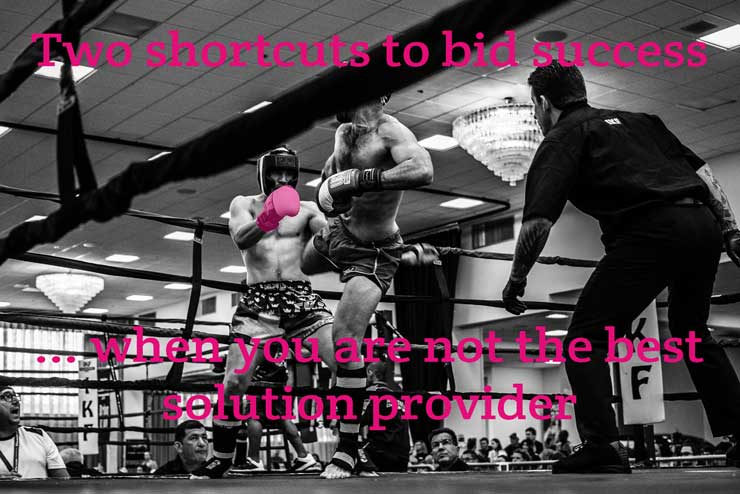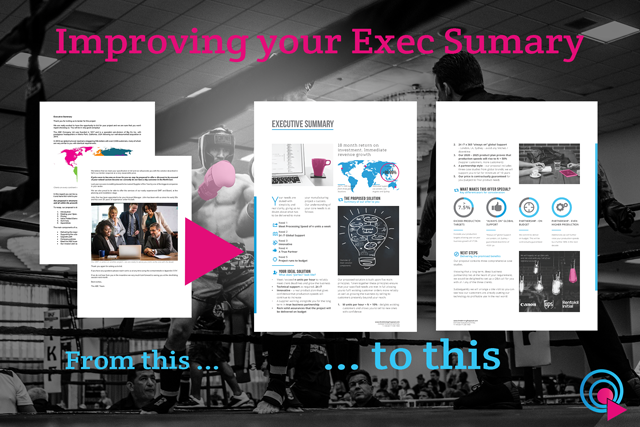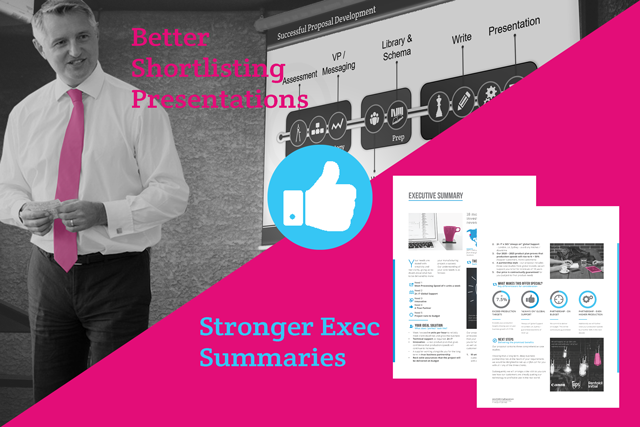Can you win the tender when you are not the best?
We are often asked “can you win the tender when you are not the best solution provider?”
Of course you can! And it happens frequently.
In sport, for instance, the “best team” loses or the “plucky underdog” pulls an unexpected victory out of the hat surprisingly often.
Think David (vs. Goliath), Leicester City, Nottingham Forest (late 1970s – 80s), Jimmy Carter (1976 presidential race).
In all of these examples people were very surprised when they won. They weren’t supposed to. But how did they win?
Winners have a Plan
At the risk of becoming trapped in a loop, it is possible to argue that the winner must have been the best all along … because they won, victory proving their underlining superiority!
Yet time and time again sports teams, for instance, that are shown by statistical analysis to be objectively better than their opposition lose.
Sure, everyone can have an off day. A superior football team can succumb to food poisoning the night before a big match in a hotel and lose the next day.
Or a Bid Manager can resign at the height of the holiday season so that a bid cannot be fully resourced.
But you do not have to have the best product or the best service portfolio to win a tender. If the quality of your solution were to be objectively assessed in detail you might only have the third, fourth or the fifth best product in your wider marketplace.
This doesn’t mean you will lose every tender you go for. You just have to be clever in the way you proceed.
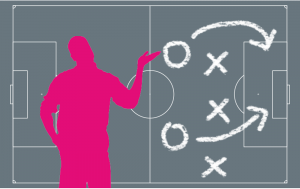 Winning tenders against the odds, like in sport, doesn’t happen by chance. Winners – even unexpected winners – take a well-considered approach that ultimately delivers competitive advantage.
Winning tenders against the odds, like in sport, doesn’t happen by chance. Winners – even unexpected winners – take a well-considered approach that ultimately delivers competitive advantage.
It means having a clear overall bid strategy and a tactical plan; a plan that maximises one’s strengths and exploits the known weaknesses of the competition for each particular tender opportunity.
In David’s case it was hitting the right spot, hard – very hard! – before Goliath could make a start on tearing him to pieces. In other words, speed and precision.
Underdogs need a better plan than habitual winners, must execute their plan better whilst demonstrating agility when required.
How does this apply to Bidding?
 Any Bid Team would wish to have the best product or service in its kit bag. Let’s assume, for a moment, that you don’t have the best product. This means that you are going to have to approach your tender with an open mind and a readiness to flex and do things a little differently.
Any Bid Team would wish to have the best product or service in its kit bag. Let’s assume, for a moment, that you don’t have the best product. This means that you are going to have to approach your tender with an open mind and a readiness to flex and do things a little differently.
High value tendering is a complicated business with many moving parts.
Yet we are continually taken aback by the number of Bid Teams that fail to reflect on their strengths and weaknesses – as well as those of their competitors – and continue in the rut of “same old, same old”, thus making the same embedded errors over and over again.
These behaviours lock in under-performance in bidding and ensure that win rates remain low.
This short article cannot address the systemic change required to become habitually successful.
Instead let us highlight two very specific areas where a change of approach can have dramatic and immediate impacts on win rates.
- The Executive Summary
- Shortlisting Presentation
There is no trickery or deception involved here. It all boils down to demonstrating to your prospect during the tender cycle that they can rely on you to meet their needs in a way that your competitors can not.
The Executive Summary
The Executive Summary is right up there with your Financials section as the most important element of your proposal – you’ve simply got to get this right. If you don’t get the Exec Summary sorted it’s very likely that your proposal will fail.
Even as recently as ten years ago you could be assured that the many, many hours spent putting together the very best bid you could would have been rewarded by your prospect’s reviewers at least taking the time to read the tender documentation pretty thoroughly.
You can’t anymore!
The modern brain has so much to distract it, and since the advent of the smartphone era we are obligated to get our messages across really quickly, ideally at a single glance.
Your Executive Summary is probably the only part of the proposal that you can reasonably expect your readers to look at. And even that is by no means guaranteed!
You only have one chance to make a first impression and your Executive Summary represents that solitary chance. So grab it with both hands!
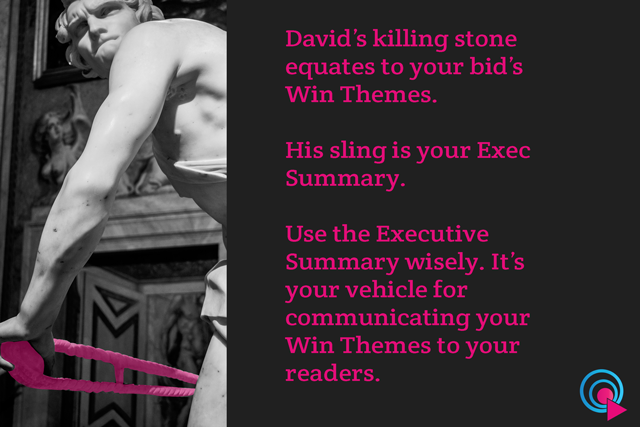 Ensure that your Executive Summary is highly visual (whilst avoiding “gratuitous graphics”), succinct and highly relevant.
Ensure that your Executive Summary is highly visual (whilst avoiding “gratuitous graphics”), succinct and highly relevant.
This is the challenge that all Bid Teams face because this necessitates identifying bid-specific Win Themes that truly set your offer apart from your competition’s.
Especially when your product or service is not on a par with that supplied by those organisations that have been long-listed alongside you, getting the Win Themes right is critical.
Your Win Themes equate to David’s stone and your Executive Summary is your sling, the vehicle for getting your sales messages and critical points of differentiation directly and immediately to your tender readers.
Get your Exec Summary right and your readers will be sure to study the rest of your documentation with greater interest, with your chances of being asked to a shortlisting presentation considerably enhanced.
Your Shortlisting Presentation
 So you’ve only gone and got shortlisted! You’ve been invited to present your bid to your prospect’s selection panel.
So you’ve only gone and got shortlisted! You’ve been invited to present your bid to your prospect’s selection panel.
This is both exciting and scary.
Take a deep breath and think about where you have got to … at this point approximately 90% of the final investment in preparing your tender submission has been made.
If you fall now at the final hurdle – putting in that last 10% of effort or so – all of your efforts and expenditure made to date will have been in vain.
The greatest error that companies make in getting ready for their shortlisting meeting is delegating the preparation and keeping those who will be up there on the stage on the big day at arm’s length.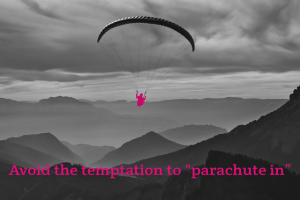
Invariably this is well-intentioned – a valiant effort to keep directors and senior managers away from speculative bidding activities and focussed on their day jobs (where incoming revenue streams are already secure and guaranteed).
Whilst these intentions are quite understandable, they result in the top team being parachuted in at the last minute, perhaps coming together only on the day before the shortlisting meeting with your prospect’s reviewers. This temptation to “parachute in” should be avoided.
Bring your shortlisting team together early and get everyone to brainstorm ideas for the shortlisting presentation itself, so ensuring that everyone is immersed in the shortlisting exercise and takes a sense of ownership.
More often than not your topics for the shortlisting event will have been proscribed by the procurement team, especially in very high value tender o opportunities and public sector procurements.
opportunities and public sector procurements.
You have got to “answer the question”, of course, but you should feel confident in answering these questions with your own individual and corporate personalities, whilst reinforcing those aspects that make you special, the factors that differentiate your proposed solution from your competitors’.
As with your new, shiny Exec Summary aim for a visual, graphics-led presentation (avoiding an excess of text and a snow-storm of bullet points).
Beware though: a wonderful shortlisting presentation alone will not guarantee success. Necessary, yes. Sufficient, no.
Indeed, a visual presentation can actually make things harder for your presenters.
By reducing the amount of text in your shortlisting presentation and paring down complex process flows and charts to their essentials, your presenters have suddenly lost some of their familiar “crutches”.
The impact-making visual presentation method means that your presenters are obliged to connect more directly with their audience, spending less time reading chunks of their slides with their backs turned towards the selection panel.
Connecting in this recommended way with the audience is very good but your presenters are going to have to invest time rehearsing their materials, especially if this audience-centric approach is unfamiliar to them.
Is that it?
Not quite … there’s still a little more.
Even the most experienced directors and knowledgeable operations personnel, for instance, can trip up during the Q&A (Questions and Answers) session that follows the shortlisting presentation.
The most common issues we see here are:
- The team not being clear on who among their number should be answering the question

- Uncomfortable silences followed by two or three people suddenly piping up at the same time to answer the question and fill the embarrassing void of silence
- One team member jumping in before a colleague has finished speaking, so that the shortlisting team trips itself up
- Everyone on the team assuming that they have to chip in on every answer
- Answers are too long, taking up too much of the precious time that has been allocated
- The Q&A session has to be wrapped up without all of procurement’s questions being asked as a result of verbose answers from your team
Any of these sound familiar?
Have your team practice so you get to the point where these things don’t happen (yet without the team appearing “fake”, “unnatural” or “rehearsed”).
Summary
The most accomplished and successful Bid Teams appear to achieve win rates of one in three or better, apparently effortlessly.
If you are consistently losing out to such an organisation you may feel that it’s always going to be really tough to beat them because they have a better product than you have or because they are more professional.
In such a situation it is understandable that the confidence of some Bid Teams recedes, their focus slips and they enter into tender cycles expecting not to win. And naturally, those expecting to lose do indeed lose.
Long term success will necessitate a root and branch review of process, people and tools, but don’t despair …
… two powerful short term fixes are available to you:
• A much improved Executive Summary (with clearly defined, powerful Win Themes concisely communicated via compelling visuals)
• A strong visually attractive Shortlisting Presentation placed at the disposal of a well-rehearsed team
You don’t have to have the best product or service to win! If you need help starting your journey to a better win rate for your tenders please drop us a line.

